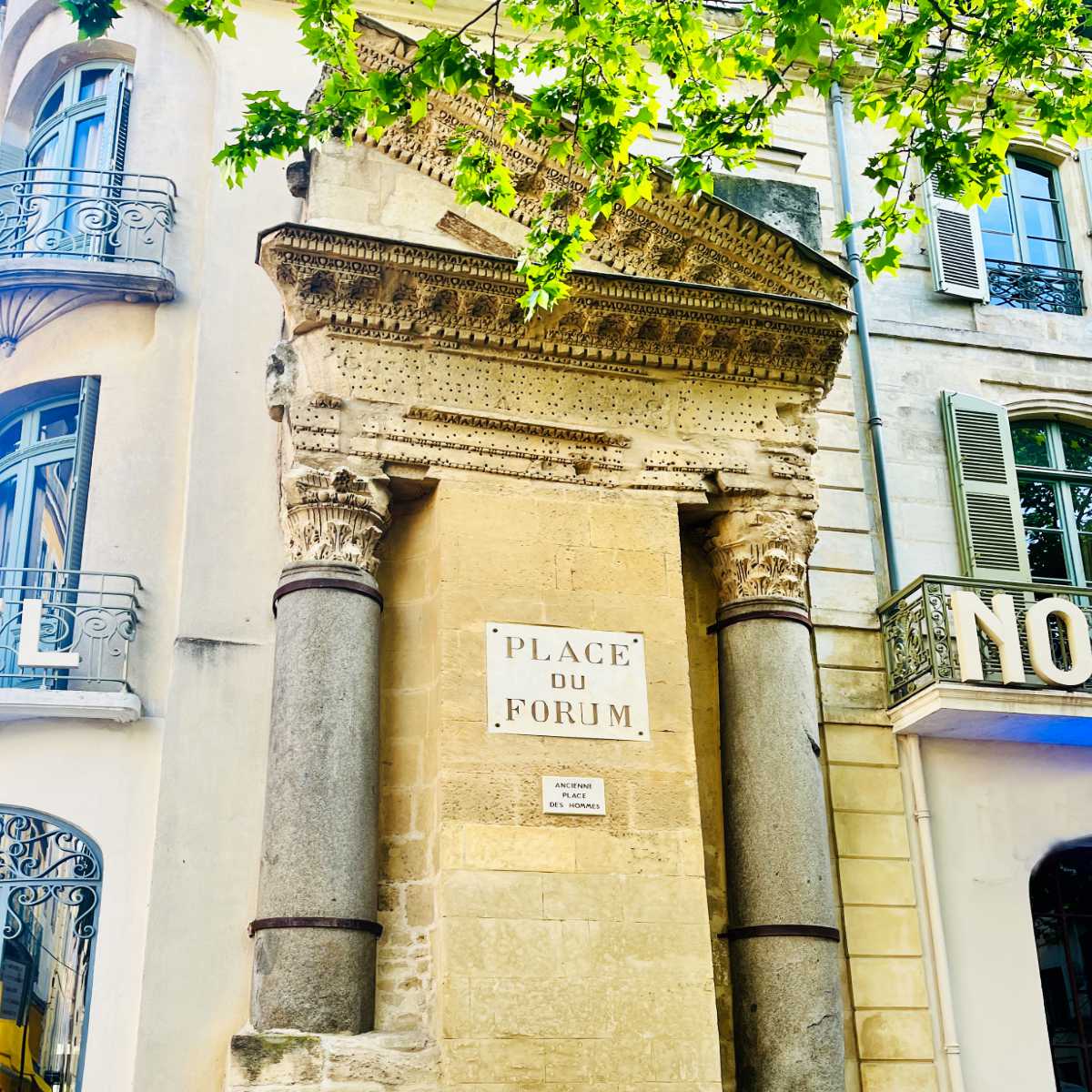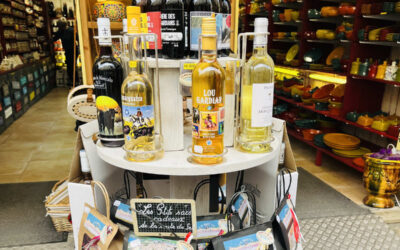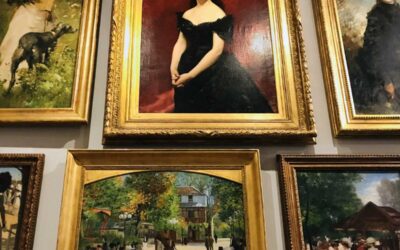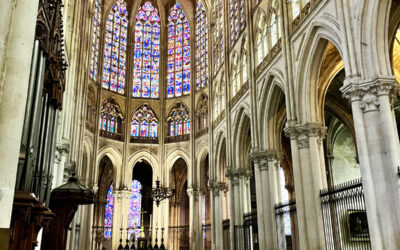Once upon a time in the land known today as France, there was a powerful the invader: the Roman Empire. The Romans, with their Mediterranean swagger, decided to gate-crash what was then known as ancient Gaul.
Setting sail from the stunning harbors along the French Riviera (yes, even back then, they knew where to find the best views), the Romans then went on a road trip north.
And the Romans weren’t just passing through. They unpacked their togas and settled in Gaul for centuries. They laid down roads and established posh new neighborhoods as they rolled through, forcing the Gaulish tribes to assimilate or die in battle.
They started building amphitheatres where gladiators duked it out, temples that would make even the gods jealous, theatres where the drama was more dramatic than ever, and thermal spas that put modern-day hot tubs to shame.
If you’re traveling around France, keep your eyes peeled and you might just stumble upon these ancient Roman sites and ruins. They’re like the surprise party favors of history, hidden around every corner.
And that Roman architecture still does continue to impress. So let’s have a look at the top Roman sites and ruins across France, shall we? Allons-y!
1. Arles (Arelate)
Known as Arelate, the city of Arles was once an important Roman settlement on the crossroads of the Rhône river and the Mediterranean sea, as Caesar and his Empire expanded west.
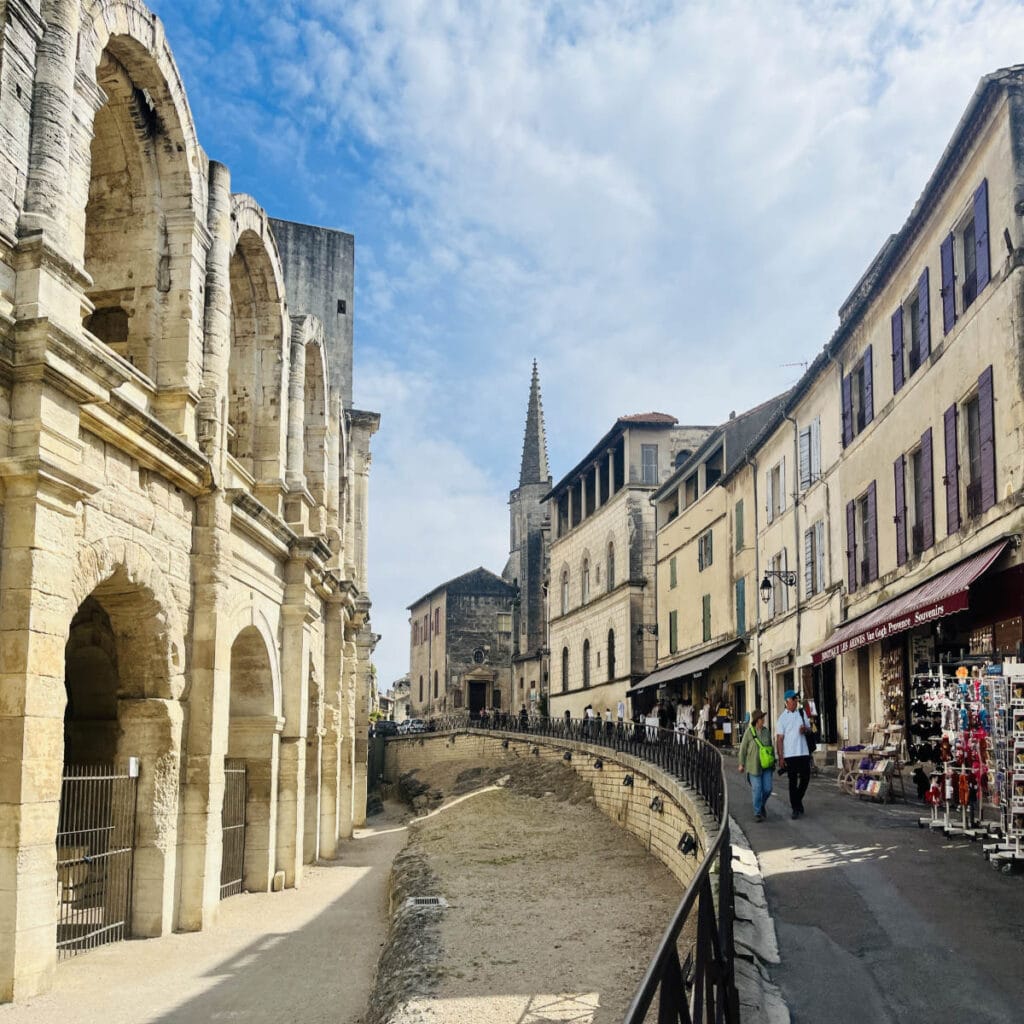
The city in southern France has a long history, having considerable importance in the Roman province of Gallia Narbonensis. Today Arles and its Roman ruins are recognized as a UNESCO world heritage site.
With a magnificent amphitheatre, forum, and other Roman buildings, Arles was city that had prospered from trade and commerce. It also has managed to preserve many of its artefacts and ruins, making it one of the best places in France to see the remaining vestiges of the Roman empire.
i) Arles Amphitheatre
A clear sign of the city’s importance is the Arles Amphitheatre, that served as a stadium for entertainment and sporting events in the old empire.
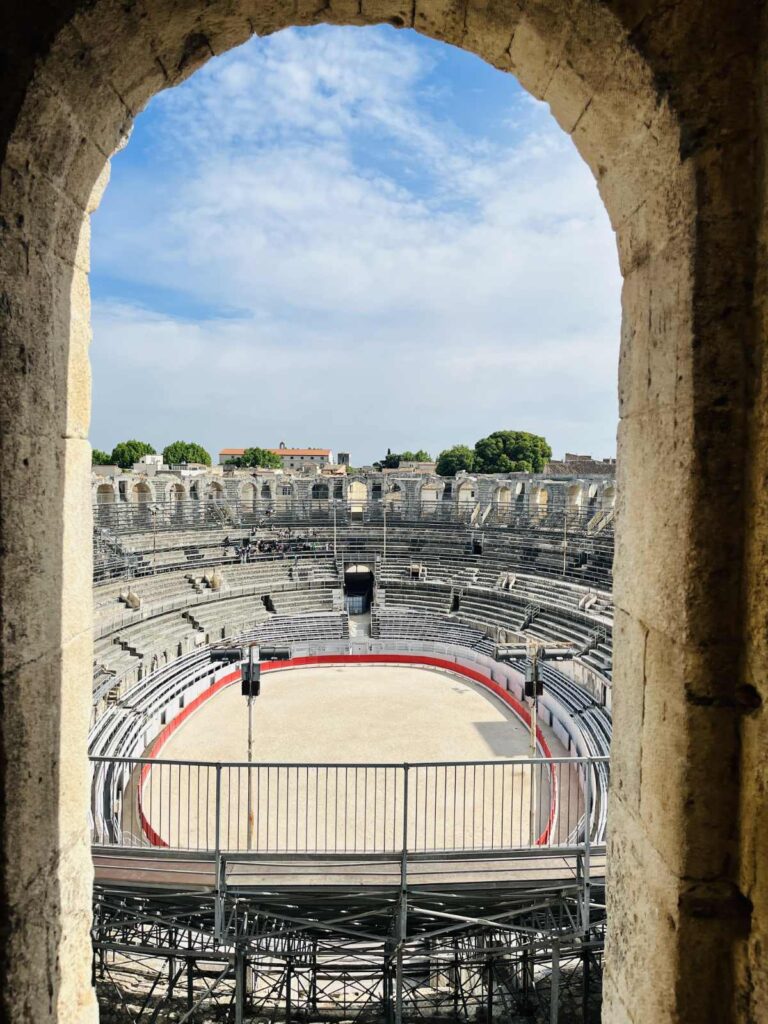
It was built in 90AD, 10 years after the Colosseum was completed in Rome. While the one in Rome is larger holding 65,000 people, the Arles amphitheatre can hold around 20,000. Quite impressive for a town that still only has a population of around 50,000.
ii) Roman Theatre
Within a few 100 yards of the Arles amphitheatre is the Roman theatre. While gladiators provided the entertainment in the amphitheatre, this Roman theatre was for plays and musical acts.
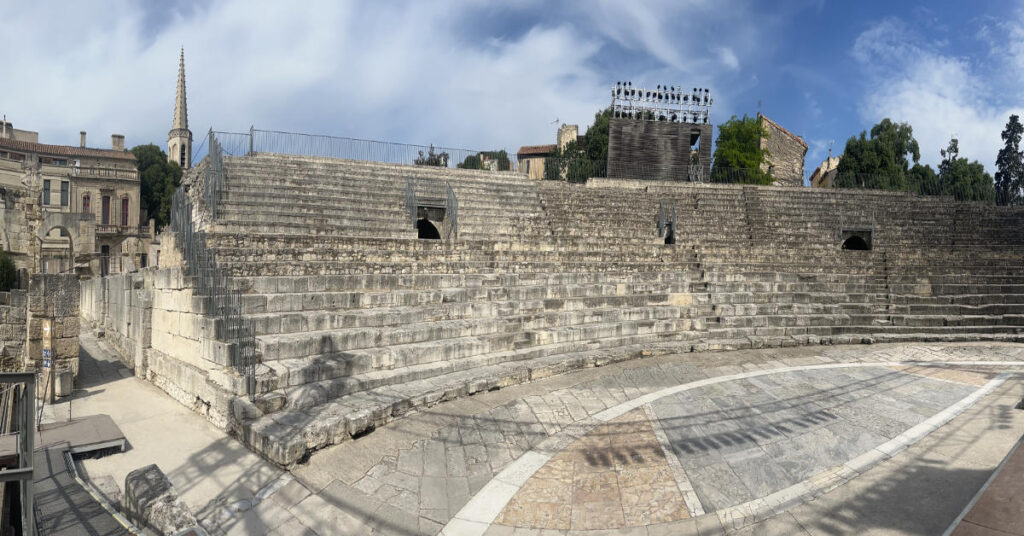
The Roman theatre is actually older than the amphitheatre, having been completed nearly 100 years earlier in 12 BC. It was built to seat around 10,000 people. (There is a similar arena in Paris, called the Arènes de Lutèce, although it is not nearly as impressive.)
At the time, it was highly decorated with statues and sculptures. The famous Venus of Arles, which is now in the Louvre museum, was discovered here during excavations of the ancient theatre.
iii) Thermes de Constantin
Along with gladiator sports and the theatre, the Romans were also very fond of the baths. Built in the 4th century, these baths were believed to have been constructed when Emperor Constantine I resided in Arelate as the city was known.
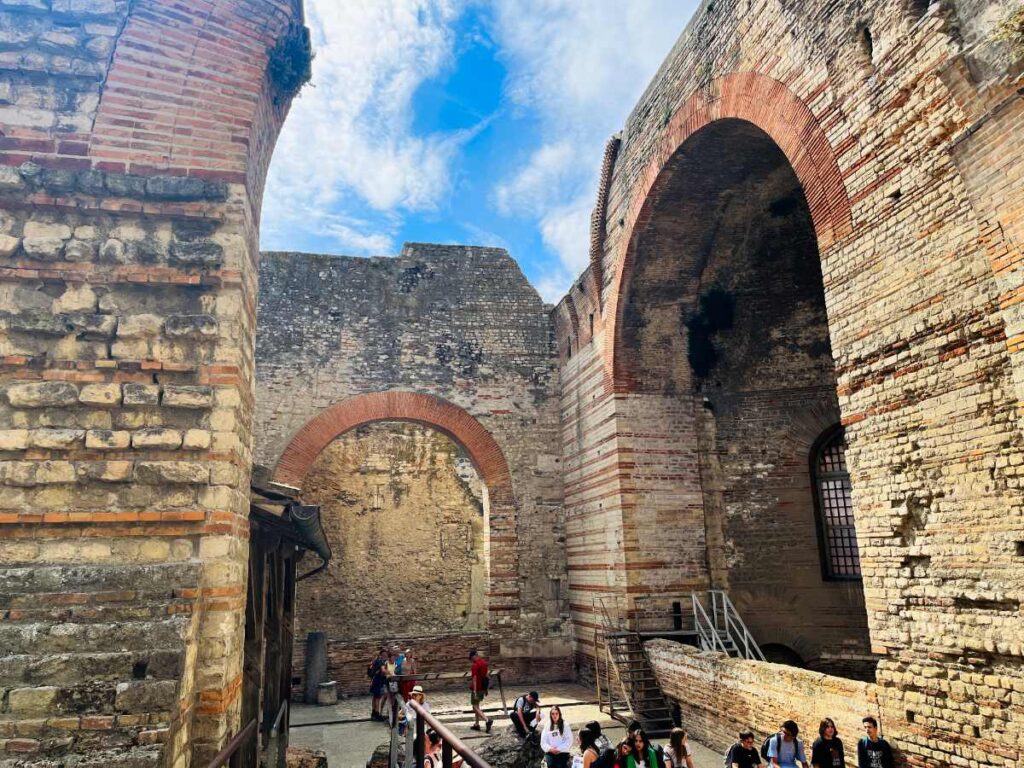
Nearly 3900sqm with grand arches and multiple levels, the bather was required to travel a circuit of hot and cold springs in an effort to restore good health.
The Thermes de Constantin are among the best preserved in France, along with the Thermes de Chassenon in Charente and the Thermes de Cluny in Paris.
iv) Alyscamps (Elysian Fields)
One of the most famous necropolises of the ancient world is located just outside the walls of the Old town of Arles. Romans required burials outside the city limits, hence the location.
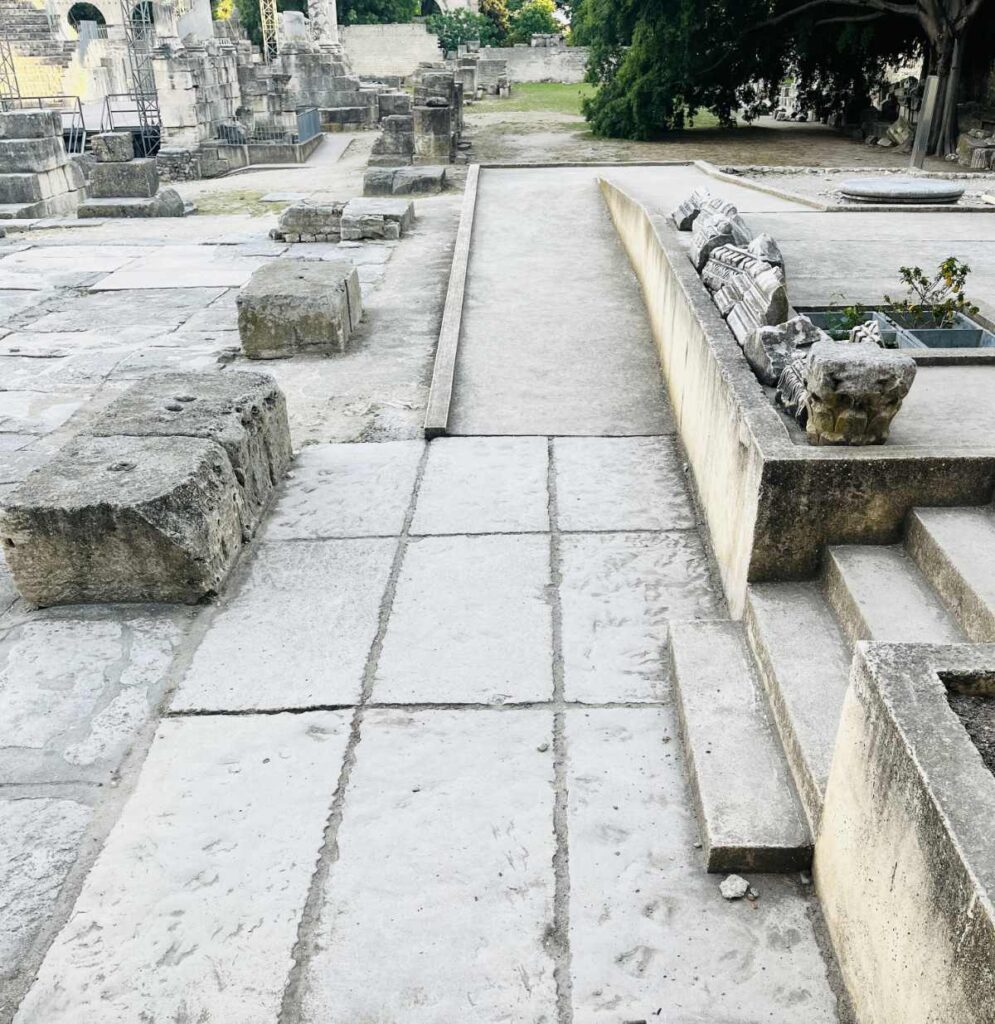
This was Arles’ main burial ground for its well-off citizens for nearly 1,500 years and is located on the old Via Aurelian leading up to the ancient Arles city gates.
The name comes from the Latin Elisii Campi, which is in French “Champs-Élysées” and in English “Elysian Fields”.
2. Pont du Gard
About 45 minutes away from Arles is the famous Roman aquaduct called Pont du Gard. Built over a period of 5 years in the 1st century, the aqueduct was built to carry water to over 50 km (31 miles) to the Roman colony of Nimes.
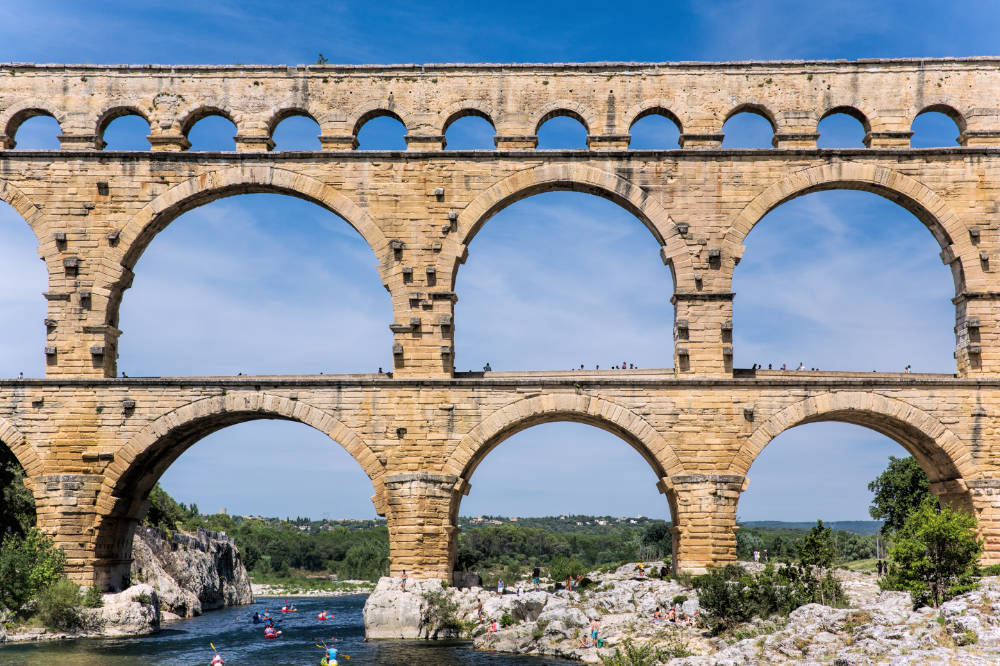
With 3 tiers of arches, it crosses the river Gardon and is the highest of all Roman aqueduct bridges, as well as being one of the best-preserved.
After the Roman empire collapsed, the Pont du Gard remained in use as it also served as a toll bridge for people looking to cross the river. The bridge remained mostly intact, with the Ducs of nearby Uzès being responsible for maintaining the bridge.
Rather than delivering water, the bridge instead became a tourist attraction, with everyone from royalty to apprentice masons making their way to the bridge to admire its architecture.
In the early 2000s, traffic around the area was rerouted to preserve this UNESCO world heritage site and from pollution and maintain the tranquil nature of the area. Today, it is one of the most popular destinations in France.
☞ READ MORE: French travel phrases you need for a trip to France
3. Nimes (Nemausus)
Nimes is famous for being the birthplace of the family of the famous Emperor Augustus, at a time when births of royals outside of Rome were rare.
Known as of the colony of Nemausus, the city of Nimes is also exceptionally rich in Roman historical sites. Along with two Roman city gates, a Temple of Diana and a large watch tower, known as La Tour Magne, it is the large Maison Carré and Amphitheatre that catch the eye as soon as you enter the city.
i) Maison Carré
In the heart of the old part of Nimes lies the Maison Carrée dating from the 1st century B.C. It is one of the best-preserved temples to be found anywhere in the former Roman Empire.

It was previously surrounded by extensive walls around it that have since come down, but the main building that is still standing is in remarkable shape.
It was dedicated by Emperor Augustus to his two grandsons who died prematurely in their late teens. Through its history, it has been a temple, a dwelling house, a church, and even an art gallery.
Built on a high set of stairs, these days the towering temple holds exhibitions throughout the year, explaining its history and the life of the Nîmois living in that era.
ii) Nimes Amphitheatre
The Arena of Nimes is one of the best preserved Roman amphitheatres in the world. It was completed around 120 A.D., holding events for local residents.
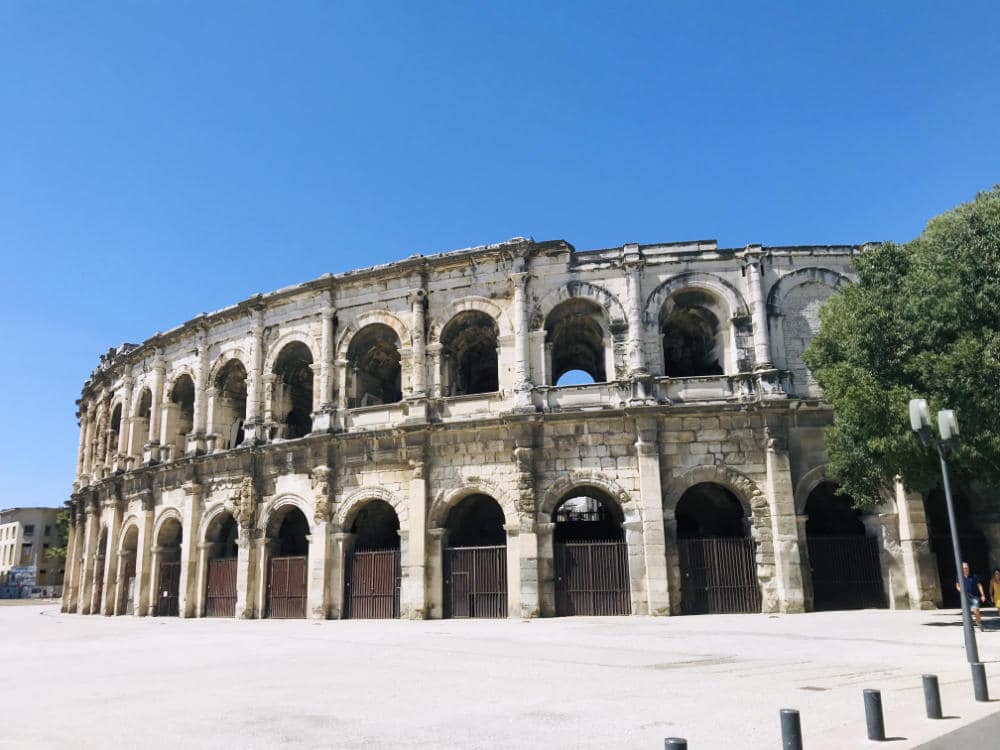
Although smaller than the Roman Colosseum in Italy which held 55-80,000 spectators, the Arena of Nimes is still one of the biggest in the world holding around 24,000 spectators.
Today, the Arena of Nîmes is still a working amphitheatre holding events like bullfights during the Feria de Nîmes, and other public events and concerts.
4. Lyon (Lugdunum)
History tells us that it was Lyon that was the capital of Roman Gaul (as France was then known), the most important city in this part of Europe. In the time before Christ, 43 BC, the city was known as Lugdunum.
The Roman Empire considered it so important that 2 future Roman emperors were born here, Claudius and Caracalla. As such, there are several Roman ruins in the city.
i) Théâtre Romain de Fourvière
Since the city used to be a Roman Colony, many traces of that Empire remain, including the Ancient Theatre of Fourvière. Roman architecture and influence stands out all across the city and most prominently in these two ancient Roman theatres located in the Fourvière area.

The larger of these is the oldest Roman theatre in France, dating back 2000 years. This ancient theatre of Fourvière had space for 10,000 people – you can imagine the grandeur of the events that were held here! The Romans were known for indulgence and this is a prime example of it.
This ancient theatre was restored in the last century and is now a UNESCO World Heritage site. It is used as a venue for popular events such as operas, dances, and musical festivals. With an expansive view out to the city, it is a beautiful location to visit.
ii) Aqueduc du Gier
The Aqueduct of the Gier is an ancient Roman aqueduct that was constructed in the 1st century AD to provide water for Lugdunum (Lyon). It is the longest and best preserved of four Roman aqueducts that used to serve the city.
iii) Temple of Augustus and Livia in Vienne
About 40 minutes south of Lyon is the small town of Vienne in which sits the ancient Temple of Augustus and Livia. It was built in the 1st century and dedicated to the honor Roman Emperor Augustus and his wife Livia. It is quite similar in style to the Maison Carré in Nimes.
After the fall of the Roman Empire as christianity swept across Europe, the temple became a parish church until the 1789 French Revolution. From 1792, the church became the temple of Reason, then a commercial court, then the museum and then a library. It finally in the 19th century, after 28 years of work, the building regained its look of Roman temple.
5. Marseille (Massilia)
The city of Marseille is the oldest town in France, and actually predates the arrival of the Romans. It was the Greeks who first came here and named the settlement Massilia. After the Greeks came the Romans, using Marseille as an entry point to Western Europe.
i) Vieux Port and Jardin des Vestiges
Like the Greeks, the Vieux Port of Marseille was an important trading port for the Roman Empire. Located in the heart of the city, this natural harbor has been the heart of the city since 600 BC.
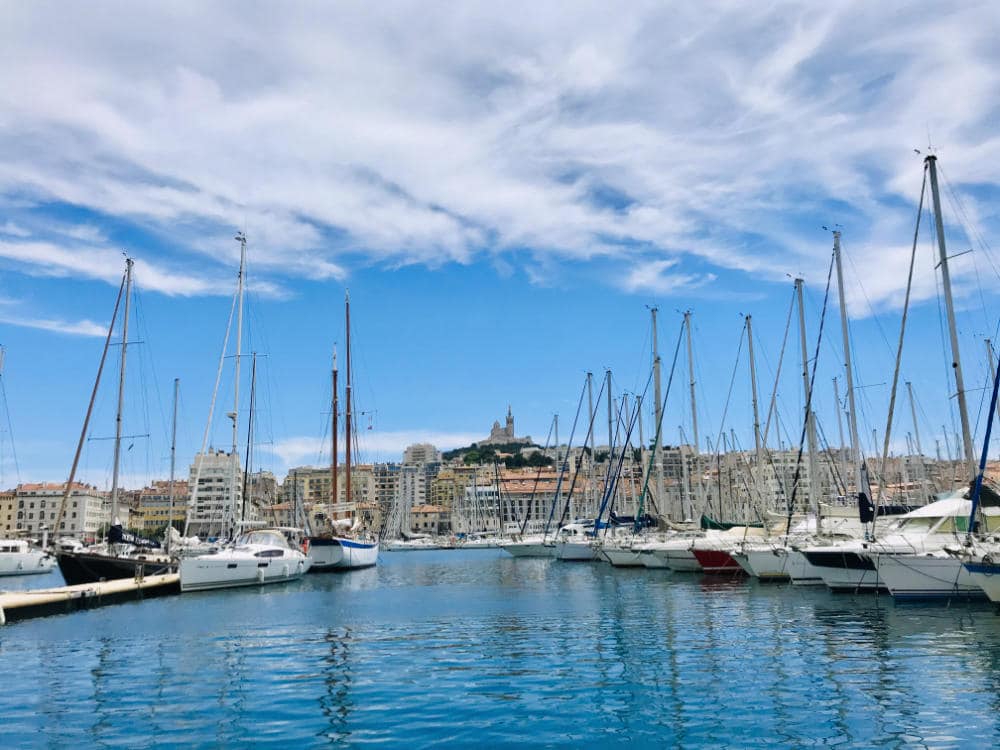
The Old Port in Marseille was completely renovated in 2012 with improved traffic circulation and a new metro station underneath. As such there is not much remaining in terms of Roman ruins.
However, a few steps away in the Jardin des Vestiges is the remains of the city’s ancient Greek and Roman port. These ruins date back to as early as 600 BC, and were discovered during a construction project in the 1960s.
During the Roman era, Marseille became an early center of Christianity. Tradition holds that Mary Magdalene came to Marseille, after landing in nearby Saintes-Maries-de-la-Mer.
It is believed that she arrived there with her sister Martha, and brother Lazarus, Maximinus, as well as Marie Salomé and Marie de Cléophas after leaving the Holy Land. From here, they spread across the area and she is said to have converted the local people of Marseille.
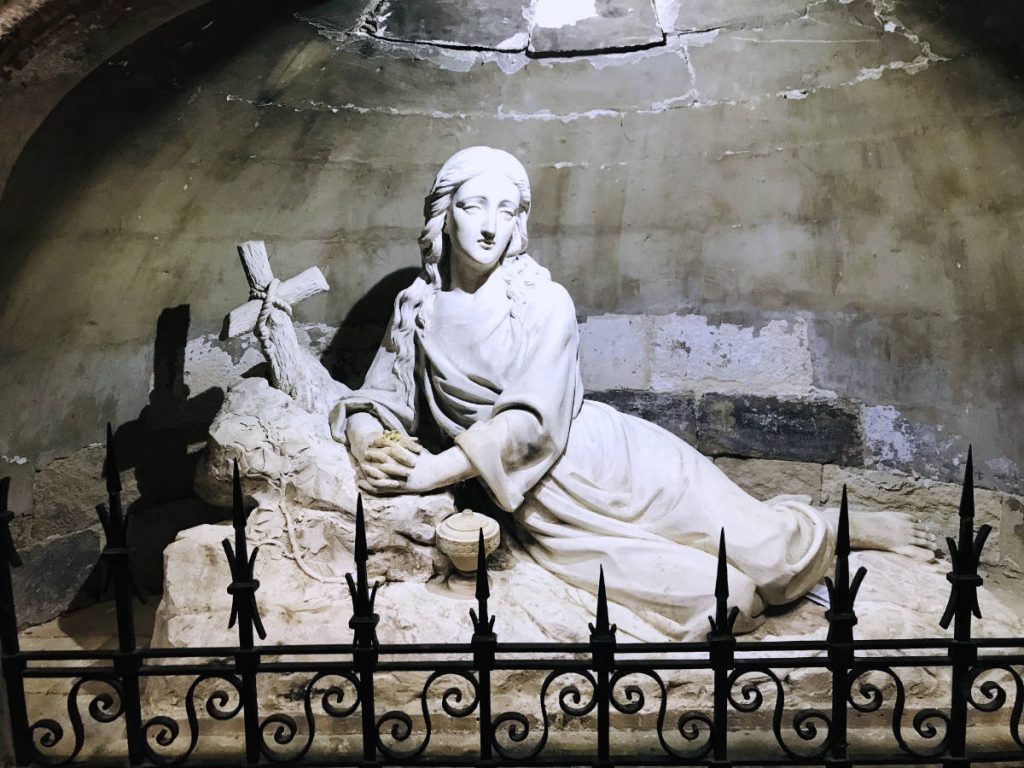
Eventually, legend had it she retired to nearby Saint-Maximin-la-Sainte-Baume (about 50min away from Marseille by car) where a crypt is said to contain her remains.
Her sister Martha headed to nearby Tarascon, and is said to have been buried there. Saint Maximinus went to Aix-en-Provence to become Bishop there, and one of the most famous saints in France.
ii) Musée des Docks Romains
A few yards away from the Jardin des Vestiges is the Musée des Docks Romains. It is next to Le Panier and holds the ruins of the several large ancient Roman warehouses that lined alongside the historic port.
The area was severely destroyed by the Germans during WWII, and the archeological ruins were found in 1947 during the restoration of the area. It also holds objects from underwater excavations carried out on 20 shipwrecks found in the harbor of Marseille.
6. Paris (Lutèce)
The Latin Quarter is one of the oldest neighborhoods in Paris, France, dating back to Gallo-Roman era. The area also holds some remarkable Roman landmarks that are still visible today.
i) Arènes de Lutèce
Located just off of Ile de la Cité, the area used to be outside the initial city walls. It was nonetheless populated, with both the Gauls and the Romans have settled in the area.
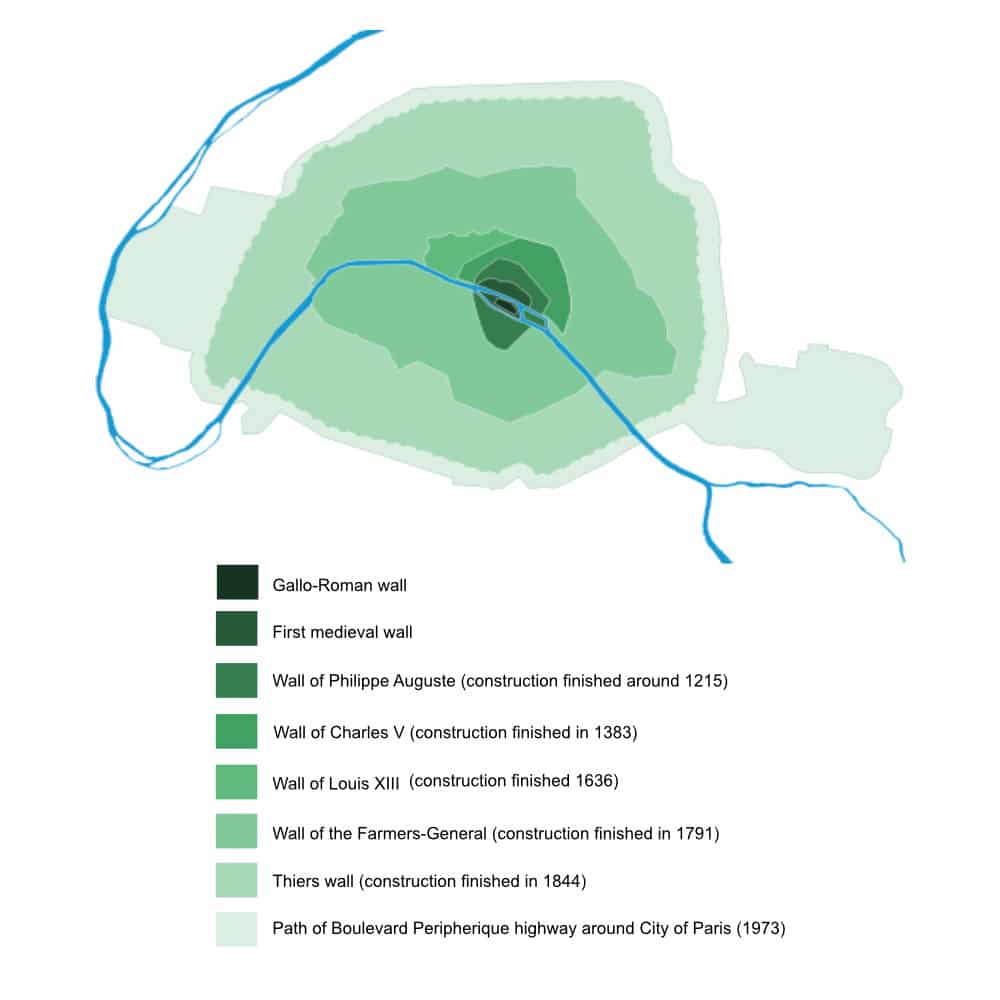
If you wander around the Latin Quarter, you can still see the ancient city walls and the Arènes de Lutèce. At the time, the Romans had changed the name of Paris to Lutetia, from the Gaulish name Parisii.
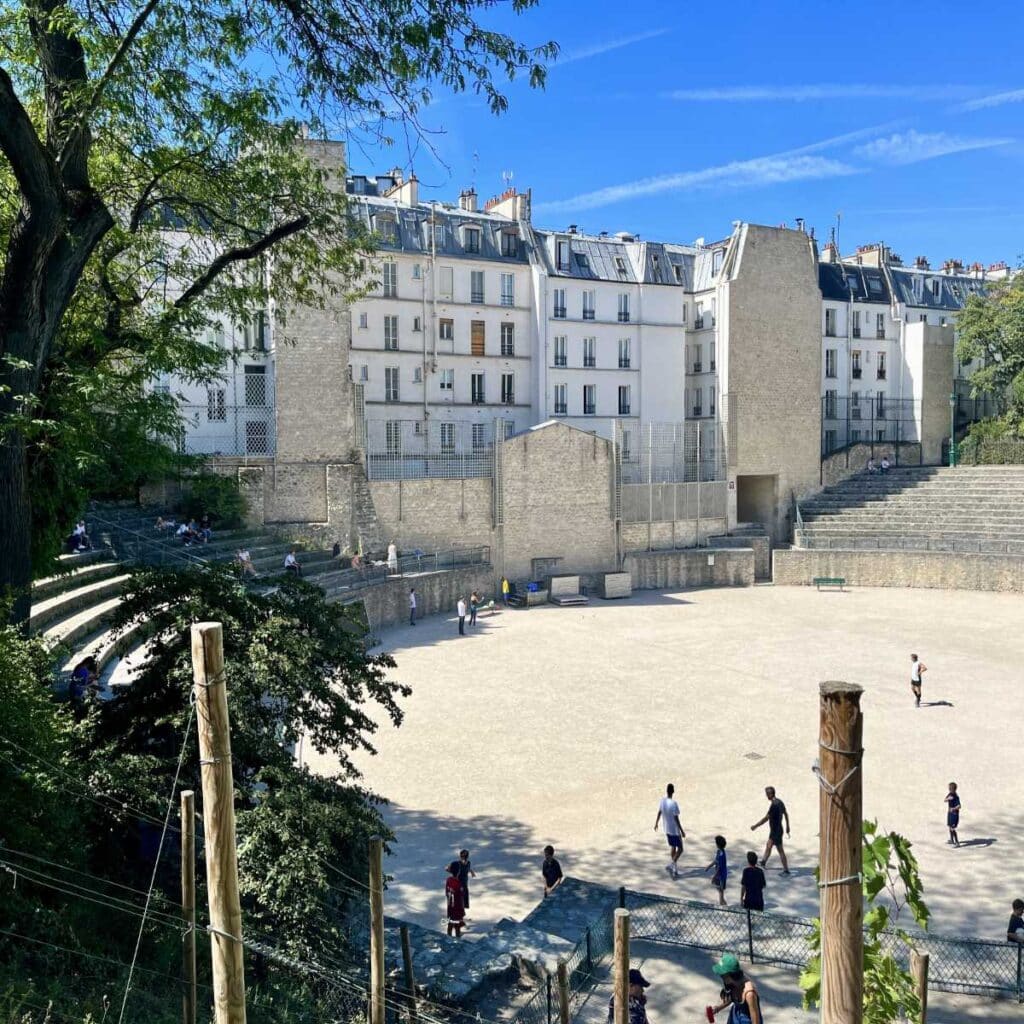
With the entrance located at 49 Rue Monge, these are among the most important ancient Roman remains from the era in Paris.
ii) Thermes de Cluny
Musée de Cluny is an abbey that was partially constructed on the remnants of the third century Gallo-Roman baths known as the Thermes de Cluny, Roman era.
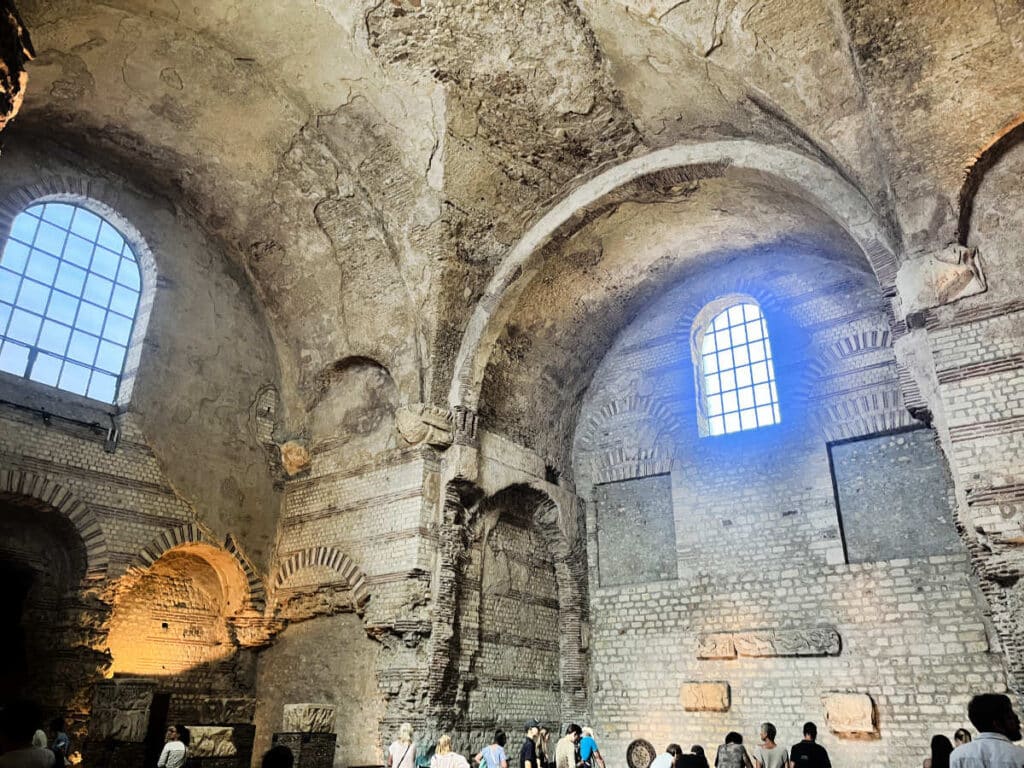
In Roman times, the thermal baths were situated in northern Lutèce were along what is today the Boulevard Saint-Michel and Boulevard Saint-Germain.
With an area of around 6,000 m², they were the largest public baths in the city, It included three levels with a deeply buried hydraulic network with a variety of conduits, service rooms in the basement, and finally a ground floor with frigidariums (cold rooms) and caldaria (hot rooms).
7. Orange (Arausio)
Roman Orange was founded in 35 BC by Romans, then known as Arausio.
A previous Celtic settlement with that name existed in the same place, but the town was named after major battle known as the Battle of Arausio which was fought in 105 BC between two Roman armies and the Cimbri and Teutones tribes.
i) Roman Theater of Orange
The Roman theatre in Orange is one of the best preserved roman theatres in France. It was built under the rule of Emperor Augustus and originally had a wooden roof across the theatre to protect the audience from the weather.
As the Roman Empire declined during the 4th century, the theatre was closed in AD 391, since the Catholic Church opposed what it regarded as uncivilized spectacles.
ii) Arc de Triomphe
Along the historic city walls of Arausio is the Arc de triomphe d’Orange. It is believed to have been built during the reign of Roman emperor Augustus (27 BC–AD 14).
It was built on the former Roman Via Agrippa to honor the veterans of the Gallic Wars and Legio II Augusta. It was later thought to have been reconstructed by Emperor Tiberius to celebrate the Roman victories over the German tribes in Rhineland.
iii) Vaison-la-Romaine
About 35 minutes away from the town of Orange is the village of Vaison-la-Romaine. It is one of the largest archeological sites in France, with a Roman theatre, ancient bridge and other ruins that dot around the countryside.
8. Saint Rémy de Provence (Glanum)
The village of Saint Rémy de Provence has been around since prehistoric times, as witnessed by engravings on nearby cave walls.
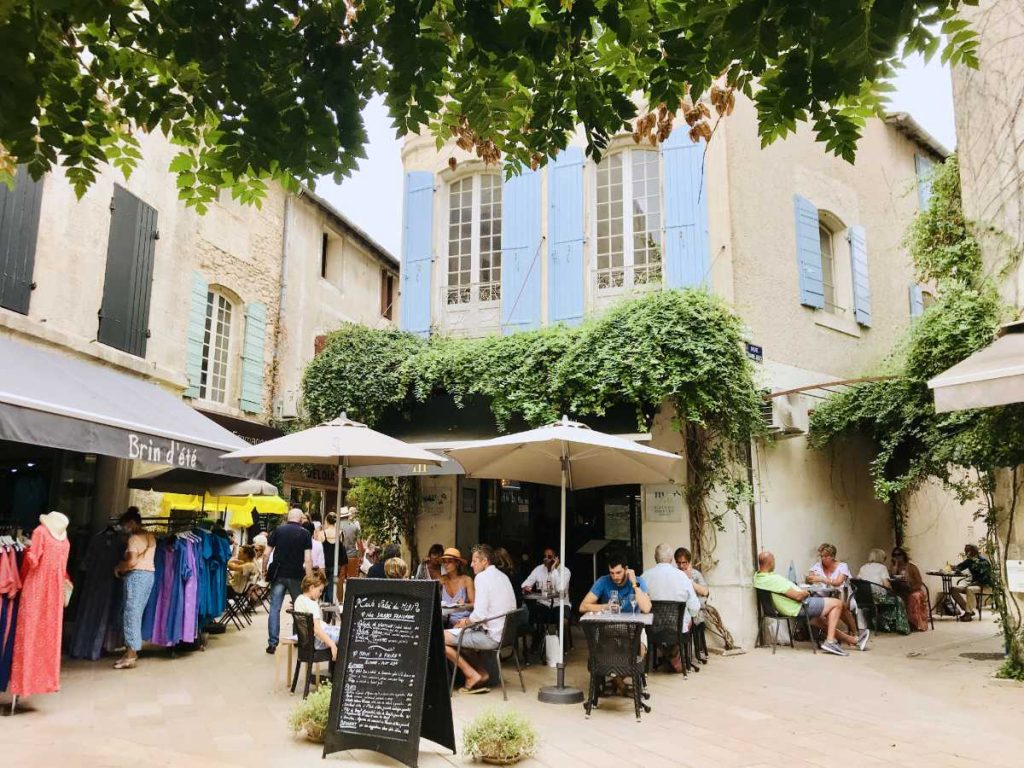
Just outside the town is an ancient city called Glanum that flourished in the time of the Celts, Greek and then Romans. Set in the heart of the Alpilles mountains, at a major crossroads, this Gallic city found prosperity from the 2nd century B.C., and is today an archeological excavation site that is open to visitors.
There are several ruins worth visiting, from the mausoleum, a giant arch, and corinthian temple pillars all with engravings on them.
9. Bordeaux (Burdigala)
The city of Bordeaux on the west coast of Fance was one that the ancient Romans had trouble conquering. In 107 BC, the Battle of Burdigala was fought by the Romans against Allobroges, a Gallic tribeThe Romans were defeated and their commander, the consul Lucius Cassius Longinus, was killed in battle.
Burdigala became the name of the city, and it would finally fall into Roman rule around 60 BC, when it became an important commercial centre. During this period several Roman sites were built in the city, some of which are still standing today.
Palais Gallien
The Palais Gallien is an ancient amphitheater , built at the beginning of the 2nd century in the Gallo-Roman town of Burdigala. A popular tradition says that the amphitheater was burnt down during the great raids of the Franks in Gaul in around 275-276 AD.
It was eventually used as a stone quarry and then a dumping ground during the French revolution, before being cleaned up and preserved as a Roman ruin.
10. Saintes (Mediolanum Santonum)
About 70 miles north of Bordeaux is the small town of Saintes where the ancient Roman ruin called the Arch of Germanicus.
The large arch was dedicated to the Roman emperor Tiberius, his son Drusus Julius Caesar, and his adoptive son Germanicus. It stands at the end of the historic ancient road that lead from Lyon to Saintes.
11. Bonnieux (Pont Julien)
Similar to the Pont Du Gard, a smaller Roman bridge called the Pont Julien is located just outside the village center of Bonnieux in Provence. That bridge was still a working bridge for cars are recently as 2005.
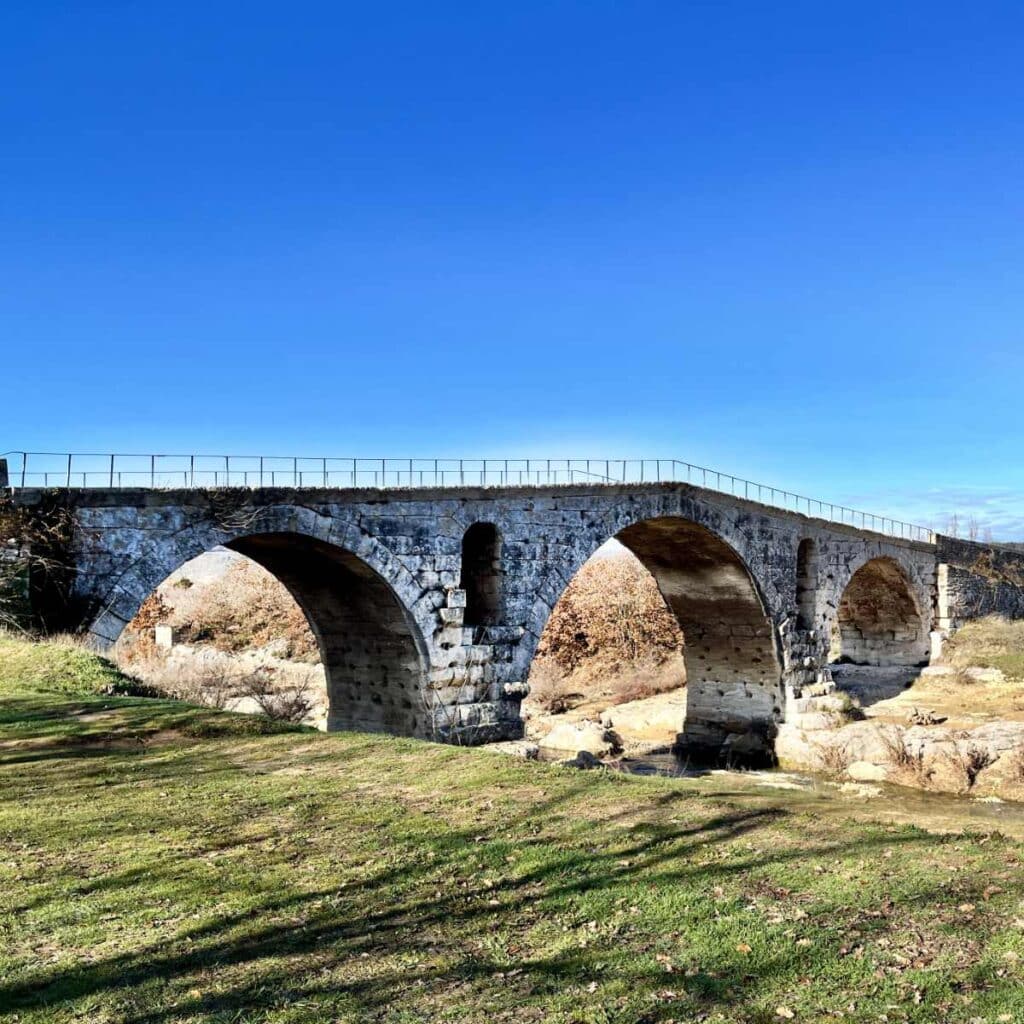
The bridge was built around 3 BC after the Roman conquest by Julius Caesar and named after him. It was built along the old Roman road, the via Domitia which connected the towns of Cavaillon to Apt.
12. Aix-les-Bains (Arc De Campanus)
Right in the heart of the Aix-les-Bains is the oldest monument in Aix-les-Bains. Arc de Campanus is thought to have been erected in 1 AD by the Romans.
The Romans enjoyed hot springs very much, and regularly frequented cities like neighbouring Briançon, as well as Aix-en-Provence and Gréoux-les-Bains in the south, which all have natural hot springs.
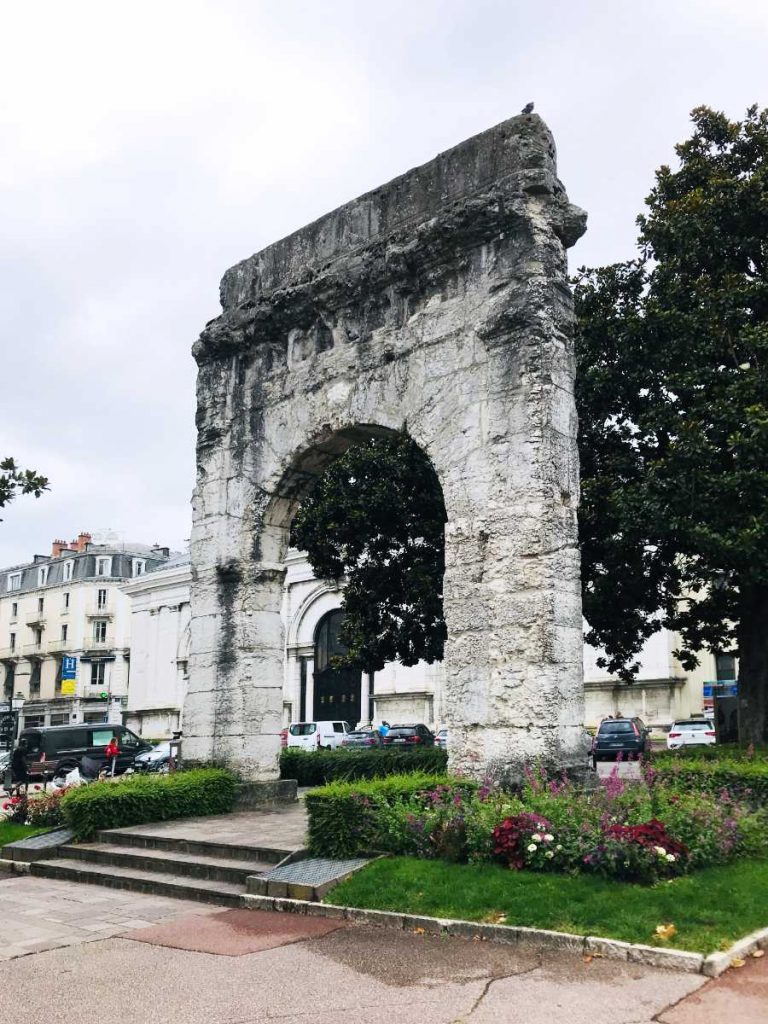
It is not clear however what the function of Arc De Campanus was. While some historians believe it to be a funerary arch, others believe that its location near the thermal spas mean that it was a type of city gate.

If you enjoyed this article, you may like to read more about the history of France. A bientôt!
